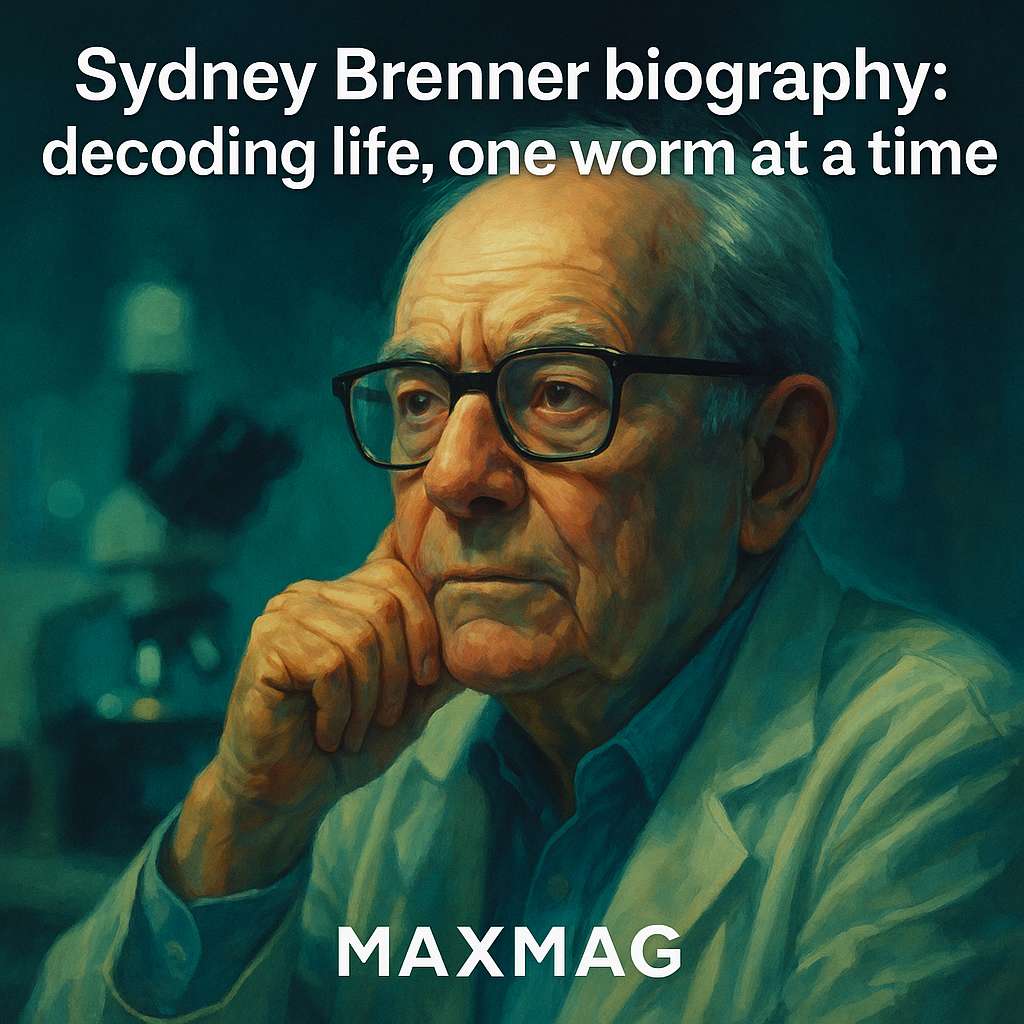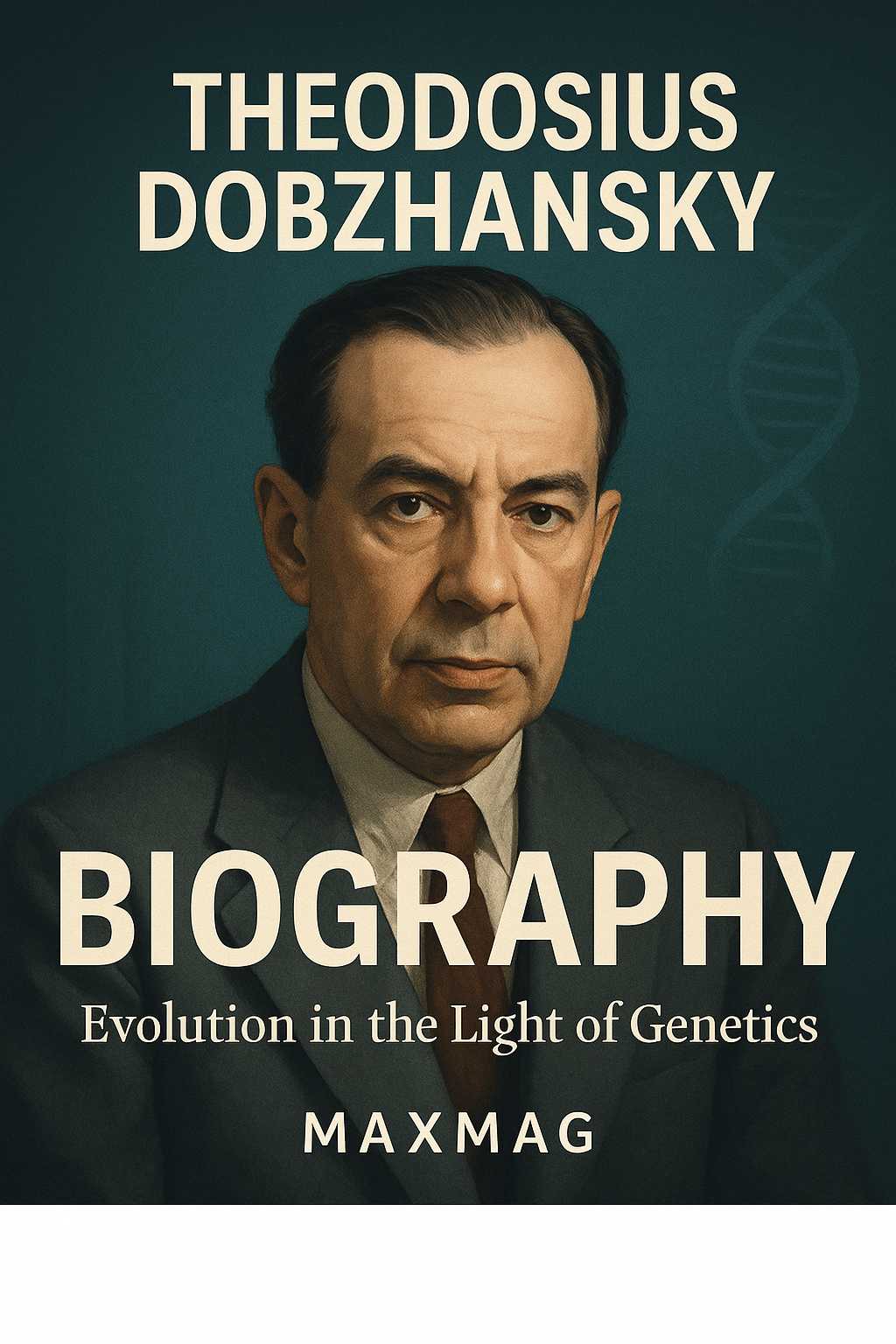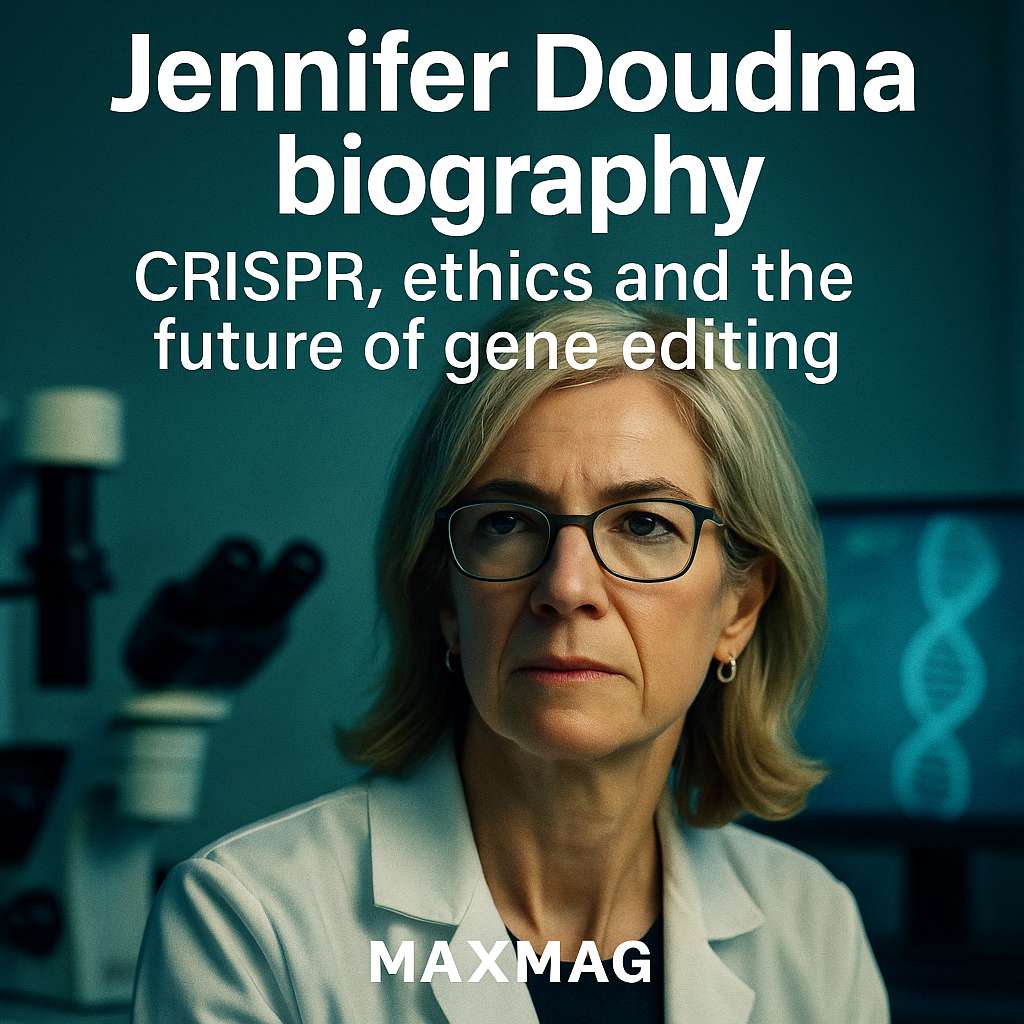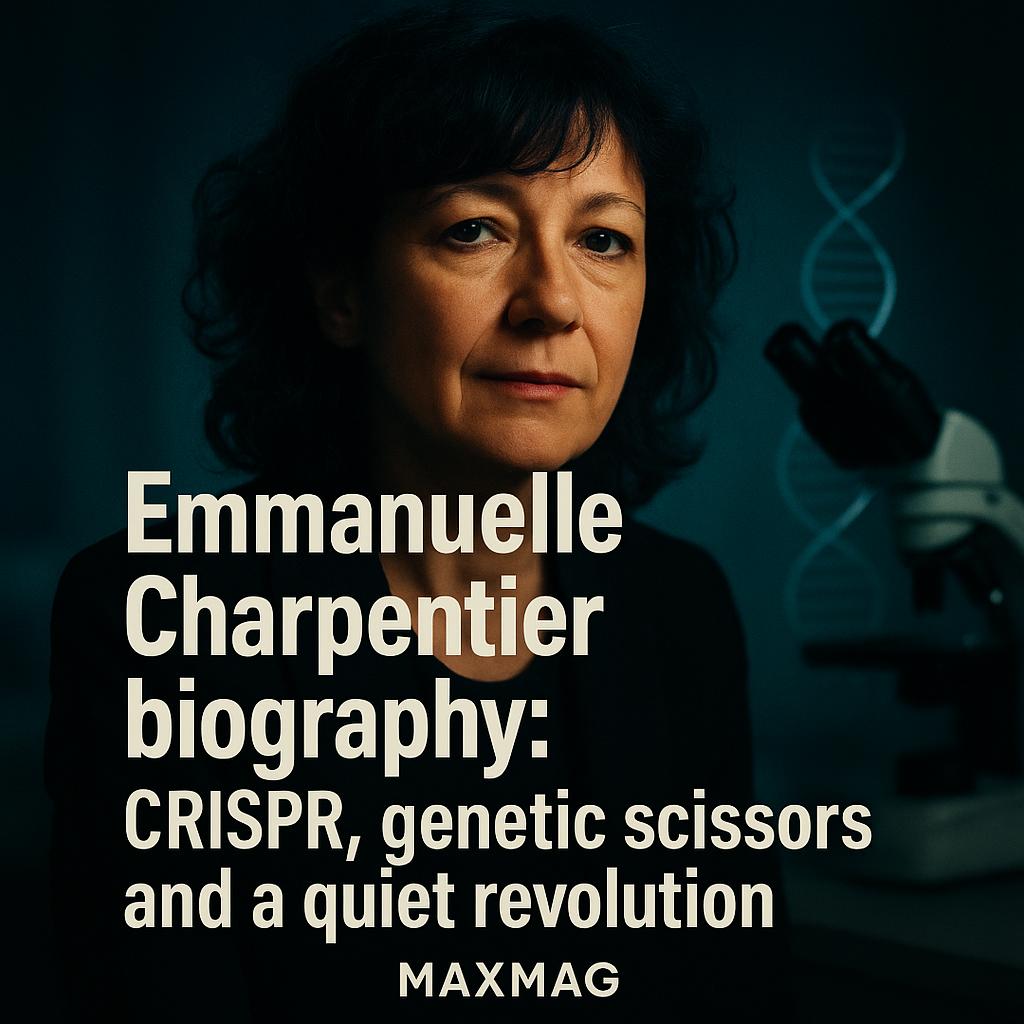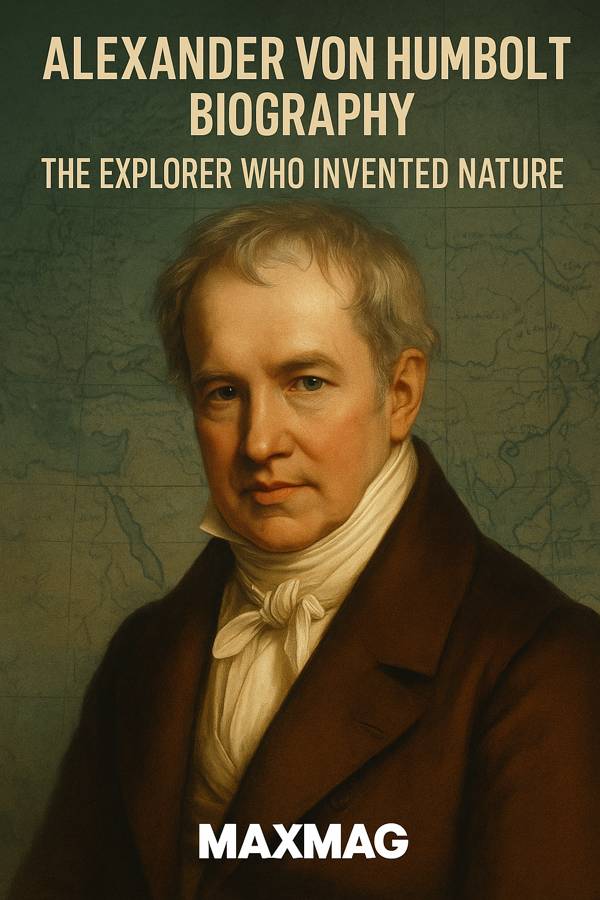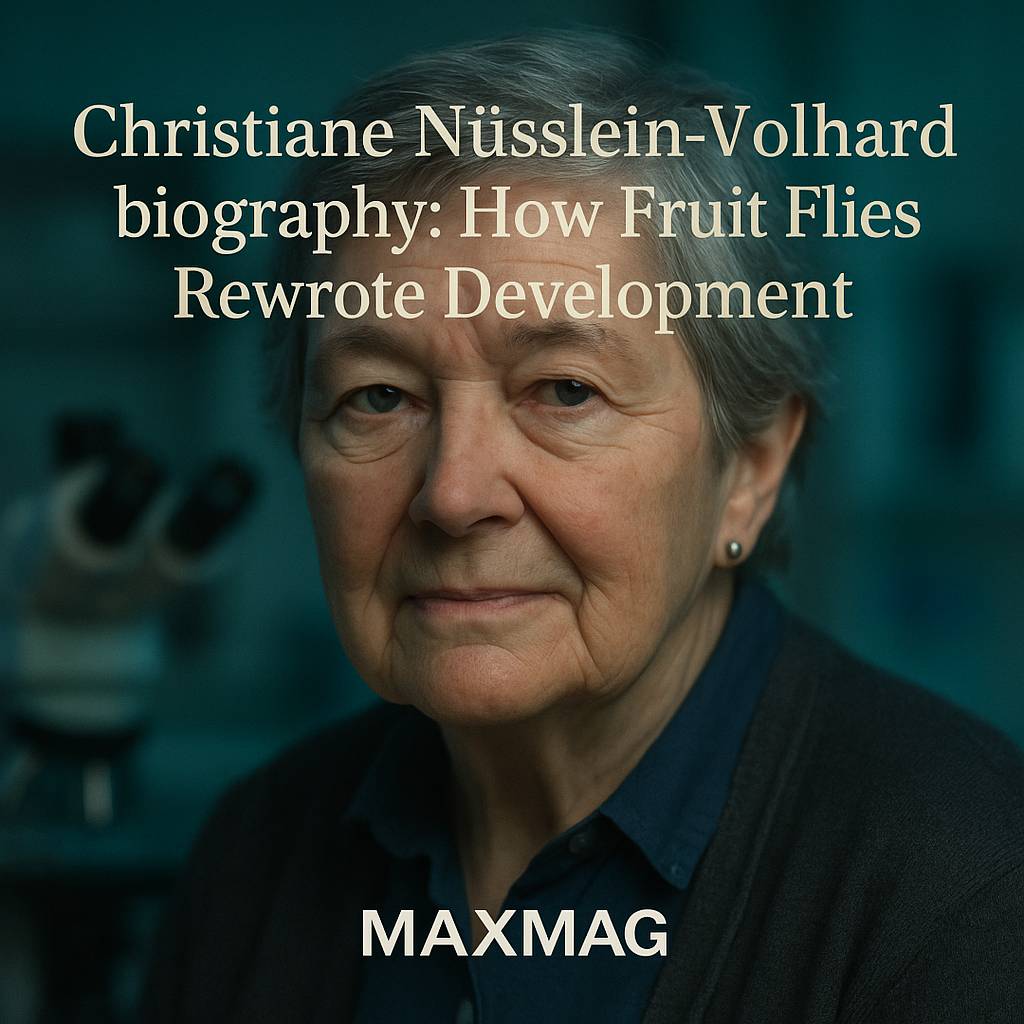
The Christiane Nüsslein-Volhard biography is, above all, the story of a stubborn curiosity that refused to stay within the boundaries of any textbook. It begins with a girl growing up in wartime Germany, enchanted by plants and animals, and leads to a woman whose experiments on fruit flies and fish reshaped modern developmental biology. The Christiane Nüsslein-Volhard biography shows how a quiet, sharp-eyed researcher turned the chaos of embryonic development into a readable genetic script, and how that script continues to influence medicine, ethics and the lives of younger scientists.
Today she is known as a Nobel Prize–winning developmental biology pioneer, the first German woman to receive a Nobel Prize in the sciences, and a public voice on women in science and on the ethics of genetic research. Yet the Christiane Nüsslein-Volhard biography is not a straight line of success. It is punctuated by doubts, wrong turns, exhausting screens of mutant embryos, and an ongoing tension between the freedom of basic research and the responsibilities that come with scientific fame.
At a glance:
- Who: Christiane Nüsslein-Volhard, German developmental biologist born in 1942.
- Field and era: Genetics and embryology in the late twentieth and early twenty-first centuries.
- Headline contributions: Discovery of key genes controlling embryonic development in the fruit fly and later in zebrafish; co-recipient of the 1995 Nobel Prize in Physiology or Medicine.
- Why she matters now: Her work underpins our understanding of congenital disorders, inspires debates on gene editing, and her foundation supports women scientists juggling research and family.
Early Life and Education in the Christiane Nüsslein-Volhard biography
Childhood curiosities that foreshadow the Christiane Nüsslein-Volhard biography
Christiane Nüsslein-Volhard was born on 20 October 1942 in Magdeburg, in what was then Nazi Germany, the second of five children. Her father was an architect, her mother a nursery school teacher with a passion for art and music. The family later moved to Frankfurt, where Christiane spent much of her childhood observing the natural world more than the classroom. Holidays on a farm, where she could watch animals and plants up close, made a stronger impression on her than any formal lesson.
She has often described herself as an average school pupil in most subjects and an unusually focused one in the things she cared about. Art and music sharpened her eye for patterns and structure. That sensitivity—to tiny differences in form, colour and arrangement—would later become a crucial asset in the painstaking work of identifying subtle mutant phenotypes in embryos under a microscope.
An unexpected path into biochemistry in the Christiane Nüsslein-Volhard biography
After finishing school in 1962, Nüsslein-Volhard briefly flirted with the idea of studying medicine. A trial month working in a hospital quickly cured her of that. She found the routine of clinical work stifling, and the distance from fundamental questions about life unsatisfying. Instead, she enrolled in biology at Goethe University Frankfurt, then switched in 1964 to the University of Tübingen to study biochemistry, drawn by a new, more modern curriculum.
In Tübingen she discovered molecular genetics at a time when the field felt fresh, ambitious and wide open. Lectures at the nearby Max Planck Institute for Virus Research brought her into contact with scientists who were shaping the emerging language of DNA, RNA and gene regulation. Still, her early work—on the interaction between RNA polymerase and DNA in bacteria—did not yet hint at the developmental genetics pioneer she would become.
She completed her diploma in 1969 and her PhD in 1974, working on protein–nucleic acid interactions. The young scientist had proven she could handle rigorous biochemical work, but she was restless. Molecular biology of viruses felt too narrow. She wanted to tackle something messier: how a single fertilised egg becomes a complex animal.
These early years in the Christiane Nüsslein-Volhard biography trace the gradual shift from a classical biochemistry training to the more daring world of developmental genetics. They also show an emerging pattern: she gravitated towards the most modern, challenging problems she could find, even when the path forward was unclear.
The Christiane Nüsslein-Volhard biography and the Birth of Her Big Ideas
From hydra to flies: learning to think in patterns
After her PhD, Nüsslein-Volhard experimented briefly with new model organisms, working on regeneration in hydra. But it was a meeting with Swiss developmental biologist Walter Gehring that gave her an entry into the world of Drosophila melanogaster, the humble fruit fly that would anchor the Christiane Nüsslein-Volhard biography in the history of genetics.
In Gehring’s lab in Basel in the mid-1970s, she encountered mutational screens that linked specific genes to dramatic changes in the fly’s body plan. Here, biology looked almost architectural: change one gene and an extra pair of wings appears; tweak another and the embryo loses its normal front–back polarity. This visual, pattern-based way of thinking suited her perfectly.
What captured her imagination was not just that genes mattered, but that they might be organised in a hierarchical logic—some deciding the basic axes of the body, others fine-tuning the subdivision into segments. To uncover that logic, she concluded, would require going far beyond the handful of mutants that labs had studied so far.
The Heidelberg screen and a radical developmental biology pioneer
In 1978, at the newly established European Molecular Biology Laboratory (EMBL) in Heidelberg, Nüsslein-Volhard teamed up with American biologist Eric Wieschaus. Together they embarked on what became known as the Heidelberg screen: an audacious, systematic search for all the genes that control early embryonic development in the fruit fly. Over several years, their team induced mutations in roughly 20,000 fly families and painstakingly examined the resulting embryos under the microscope.
It was repetitive, physically demanding work. The lab had to collect embryos at exact time points, mount them on slides, and score tiny changes: missing segments, reversed patterns, disrupted denticle belts. Yet the payoff was extraordinary. They identified around 600 mutant lines and distilled these into about 120 genes essential for early development, including 15 that played central roles in segment formation.
This was the moment the Christiane Nüsslein-Volhard biography intersects with the broader history of modern science. The Heidelberg screen turned developmental biology into a genetics-driven, large-scale enterprise and helped establish the field of developmental genetics itself. It showed that even something as intricate as building a body from scratch could be understood as a layered system of genetic instructions.

Key Works and Major Contributions of Christiane Nüsslein-Volhard
Writing the genetic script of the embryo
Their landmark 1980 paper on “mutations affecting segment number and polarity in Drosophila” divided the newly discovered genes into gap genes, pair-rule genes and segment-polarity genes—an elegant genetic hierarchy that mirrored the embryo’s unfolding complexity. For non-specialists, one analogy helps: imagine a city being built overnight. Gap genes help mark out large districts, pair-rule genes draw the grid of streets, and segment-polarity genes define which way the houses will face within each block.
This work did more than catalogue mutants. It provided a conceptual framework for thinking about how patterns emerge from a single fertilised egg. Later research, including that of Nüsslein-Volhard herself, showed that similar genetic and molecular strategies are reused in many animals, from flies to humans.
Bicoid, morphogens and the idea of gradients
In the late 1980s, Nüsslein-Volhard and her colleagues identified the protein encoded by the bicoid gene as the first experimentally proven morphogen—a molecule that forms a concentration gradient across the embryo and instructs cells what to become depending on how much of it they sense.
If the Heidelberg screen had revealed the cast of characters, bicoid explained part of the script: it showed how a simple gradient could translate into complex, step-wise decisions about cell fate. For a general reader, it may help to think of a sunrise: nearby hills receive light first and therefore “know” they are at the east, while valleys in shadow lag behind. In a similar way, cells near the high end of a morphogen gradient interpret themselves as “head”, while those further away take on more posterior identities.
The discovery of bicoid and other morphogens deeply influenced both developmental biology and evolutionary thinking, suggesting that a shared molecular toolkit underlies the body plans of very different animals.
From flies to fish: establishing zebrafish as a model organism
After the success with Drosophila, Nüsslein-Volhard turned to a very different animal: the zebrafish, a small striped freshwater fish. In the mid-1980s and 1990s, her lab in Tübingen scaled up mutagenesis screens in zebrafish embryos, similar in spirit to the fly work but now in a vertebrate.
The choice looked risky at the time—zebrafish genetics was underdeveloped, and some funding bodies were sceptical. But zebrafish embryos were transparent, developed rapidly and shared many key developmental pathways with mammals. Within a decade, her group and collaborators had identified hundreds of zebrafish mutants affecting organ formation, blood development, and the nervous system.
This vertebrate arm of the Christiane Nüsslein-Volhard biography made her a developmental biology pioneer twice over. It helped secure zebrafish’s status as a standard model organism, which today is used in labs worldwide to study congenital disease, tissue regeneration and even drug screening.
Viewed together, these key works show how the Christiane Nüsslein-Volhard biography is woven through the history of embryonic development research: from decoding the early patterning of a fly embryo to opening up a fish as a window into vertebrate development.
Methods, Collaborations and Working Style
Genetic screens as organised chaos
The genetic screens that define much of the Christiane Nüsslein-Volhard biography were logistically brutal. They required thousands of flies or fish, careful timing of crosses, and a disciplined approach to scoring embryos. Colleagues recall benches covered with vials, embryonic collections piled up in the cold room, and a perpetual hum of microscopes.
Yet within that apparent chaos, Nüsslein-Volhard imposed a strict logic. She believed in saturation—pushing a system until most or all relevant genes were uncovered. She also insisted on thinking visually. Patterns on the larval cuticle, subtle changes in segment boundaries, the distribution of pigments in zebrafish—these were not just curiosities but clues to underlying gene networks.
Partnerships that shaped a field
Eric Wieschaus was the most famous of her collaborators, and their joint work became textbook material, recognised by the Nobel Prize in Physiology or Medicine in 1995 alongside Edward B. Lewis. But the Christiane Nüsslein-Volhard biography is also full of less-celebrated, long-term partnerships: students and postdocs who stayed on to build the zebrafish program; colleagues in Tübingen who shared the burden of designing and running screens; and networks of developmental geneticists who swapped mutants and ideas at key moments.
Her reputation in the lab mixed high expectations with a certain dry humour. She valued independence and perseverance—traits she saw as essential to surviving in competitive science—and tended to be frank rather than diplomatic in her feedback. For many younger scientists, this combination of rigour and directness was formative, setting a standard for how to design experiments and think critically.
Leadership at the Max Planck Institute
From 1984 until 2014, Nüsslein-Volhard served as director of the Max Planck Institute for Developmental Biology in Tübingen, leading its genetics department. Under her leadership, the institute became a hub for developmental genetics, attracting researchers from around the world.
Running a large research institute added administrative and political responsibilities to her life—budgets, hiring decisions, long-term strategy. But it also gave her the power to shape an environment in which risky, curiosity-driven projects could flourish. That institutional influence is another layer in the Christiane Nüsslein-Volhard biography that goes beyond the lab bench.
Taken together, her methods and collaborations show a scientist who believed in large, systematic approaches, but never lost the sharp eye for detail that began in childhood.

Controversies, Criticism and Misconceptions
Debates over genetics and destiny
Any scientist working on genes and development inevitably encounters public anxieties about determinism—about the idea that genes might fix our fate. The Christiane Nüsslein-Volhard biography is no exception. Some of her popular writings and interviews have been read as emphasising innate differences, whether in intelligence, temperament or susceptibility to disease. Critics worried that such statements could be interpreted as excusing social inequalities or overlooking environmental factors.
Nüsslein-Volhard has generally argued that understanding genetic influences is a prerequisite for treating disease and for designing fair policies, not an excuse to accept injustice. She has also been cautious about over-promising what genetics can deliver, stressing the complexity of traits and the interplay between genes and environment.
Ethics councils and the politics of embryos
Her appointment to the German National Ethics Council in the early 2000s placed her at the heart of contentious debates about embryo research, stem cells and reproductive technologies. In this role, the developmental biology pioneer found herself negotiating between scientists eager to push the boundaries of what was technically possible and politicians and public groups anxious about the moral status of embryos.
She argued for a cautious, regulated expansion of research possibilities, insisting that potential medical benefits should not be blocked purely out of fear. At the same time, she acknowledged that some lines—such as implanting artificial embryos into a womb—should not be crossed. It was a balancing act that drew criticism from both conservative and more radical voices.
Misconceptions about “the lady of the flies”
One recurring simplification in media portrayals is the idea that Nüsslein-Volhard is “only” the fruit fly Nobel laureate, frozen in time with the Heidelberg screen. In reality, the Christiane Nüsslein-Volhard biography spans several phases: early biochemical work, the Drosophila revolution, the zebrafish era, and later decades devoted to ethics, mentoring and science policy.
Another misconception is that her success story somehow disproves the systemic obstacles women face in science. Nüsslein-Volhard herself has repeatedly pushed back against that narrative, writing and speaking about bias, structural barriers and the unequal distribution of care work that still hold many women back.
These controversies and misunderstandings are part of what makes the Christiane Nüsslein-Volhard biography so revealing: it is not just about experimental brilliance but also about the messy, often politicised world in which modern science operates.
Impact on Developmental Biology and on Wider Society
From basic research to medical insight
When Nüsslein-Volhard began mutagenising flies, the ultimate medical relevance of the work was far from obvious. Today, the genes and pathways uncovered in those screens are central to understanding a wide range of human birth defects and diseases. Many of the same signalling cascades that pattern the Drosophila embryo also operate in vertebrates, and mutations in them can underlie heart malformations, limb defects or cancer.
An excellent educational summary of how her fly and fish experiments opened doors to human developmental medicine can be found in a detailed overview of her Drosophila and zebrafish experiments prepared by the Embryo Project Encyclopedia at Arizona State University.
Her work on morphogens and gradients, meanwhile, has shaped how biologists think about tissue engineering and regenerative medicine, fields that attempt to coax cells into forming new structures in the lab or in the body.
Inspiring a generation of women in science
Beyond the lab, Nüsslein-Volhard has become a symbol—though sometimes an ambivalent one—of women’s progress in science. She knows first-hand what it is like to be the only woman in a roomful of senior scientists, and to be underestimated or sidelined. These experiences informed her essays on women in research and her decision to create the Christiane Nüsslein-Volhard Foundation, which provides grants for childcare and household help to early-career women scientists in Germany.
The foundation is a concrete response to a structural problem: the way unpaid care work disproportionately falls on women, making it harder to sustain the long, irregular hours that high-level research often demands. In this sense, part of the Christiane Nüsslein-Volhard biography is about institutional change, not just individual achievement.
Her broader influence on society can also be felt in popular science. Her book Coming to Life: How Genes Drive Development introduces non-specialist readers to the logic of embryonic development and the ethical questions it raises. It brings the story of fruit flies and fish into living rooms and classrooms, connecting fundamental biology with everyday concerns about reproduction, health and identity.
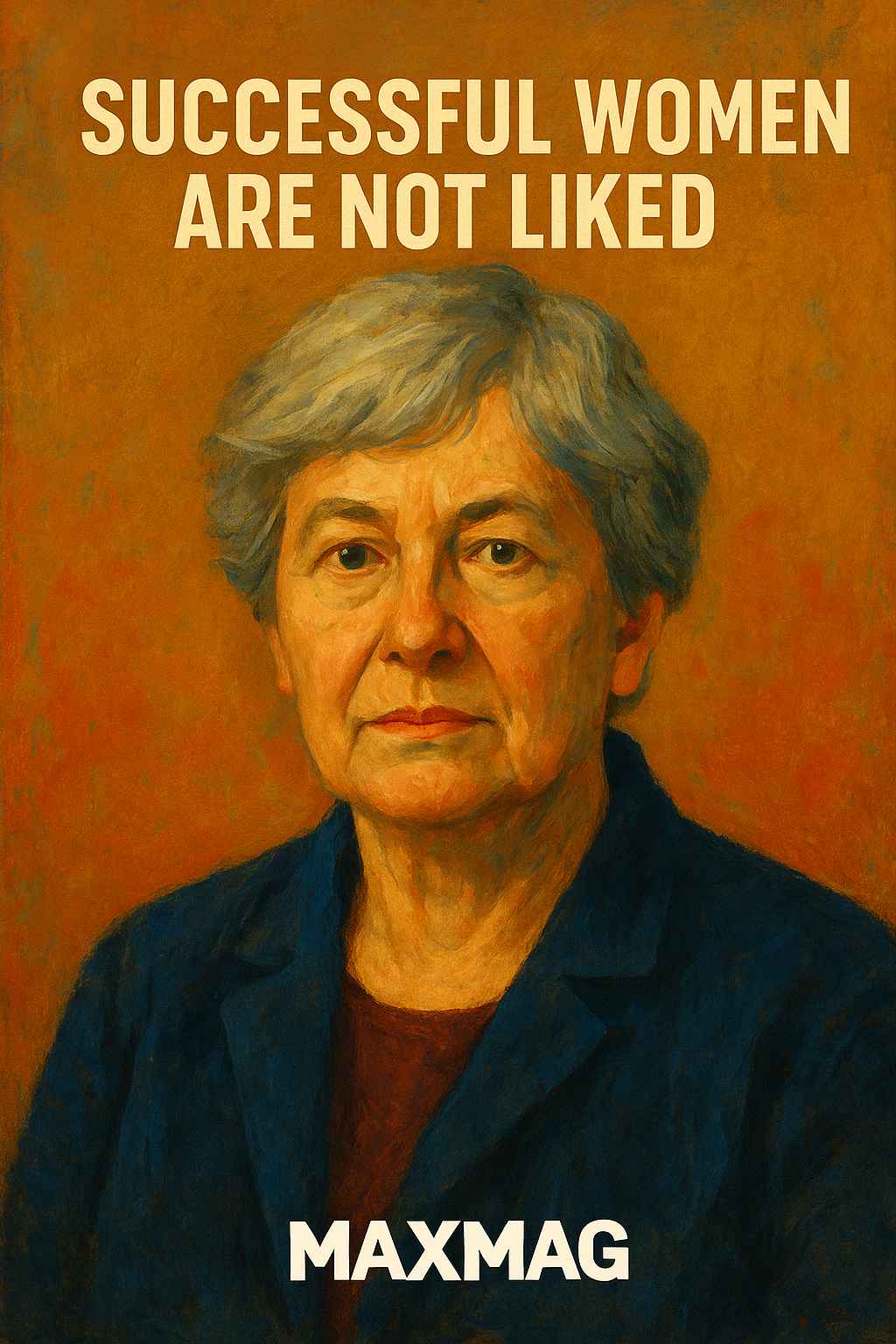
Personal Beliefs, Character and Private Life
A life shaped by work, music and the natural world
Unlike many traditional biographies that linger on romance and family, the Christiane Nüsslein-Volhard biography is dominated by work, music and a love of nature. She married briefly as a young woman but divorced early and chose not to have children, later reflecting that it would have been extremely difficult to combine motherhood with the demands of a leading research career.
Outside the lab, she is known for her love of classical music, playing the flute and singing in chamber ensembles. There is also her perhaps unexpected role as a cookbook author: in 2006 she published a collection of recipes that reflect her enjoyment of good food and the social side of cooking.
These details may seem minor next to a Nobel Prize, but they matter. They remind readers that the Christiane Nüsslein-Volhard biography is not just about genes and embryos. It is also about a person who needs balance, who finds joy in music and in the rhythms of daily life, even while pushing the boundaries of developmental genetics.
Views on science, responsibility and freedom
On the philosophy of science, Nüsslein-Volhard tends to emphasise curiosity and the open-ended nature of research. She believes that the most valuable discoveries often arise from questions that have no immediate application. At the same time, her experience on ethics councils has made her keenly aware that scientific freedom cannot be completely divorced from social responsibility.
In public statements she has often argued that society must take ethical concerns seriously without allowing fear to paralyse research that could alleviate suffering. This dual commitment—to bold exploration and to careful regulation—is a recurring theme in the Christiane Nüsslein-Volhard biography.
Later Years and the Final Chapter of Christiane Nüsslein-Volhard
Stepping back from the bench, not from science
After decades as director, Nüsslein-Volhard formally retired from her leadership role at the Max Planck Institute in 2014. Retirement, however, did not mean disappearing from the scientific stage. She remained active as an emeritus researcher, continued to write and speak, and stayed closely involved with her foundation.
In interviews from these years, she appears reflective but still impatient with sloppy thinking—whether in science, politics or media. She expresses pride in the new generations of developmental geneticists building on the foundations she helped lay, but also concern about increasing pressures in academia, from precarious contracts to the race for high-impact publications.
Recognition and honours
The list of awards attached to the Christiane Nüsslein-Volhard biography is long: the Lasker Award, the Gottfried Wilhelm Leibniz Prize, the Pour le Mérite order, a minor planet named in her honour, and honorary doctorates from many of the world’s leading universities. But honours, she has suggested, are less important than the work itself and the people it enables.
What she seems to value most is seeing ideas she once tested in a small Heidelberg lab grow into entire subfields—seeing, for instance, zebrafish become a standard tool for understanding human disease, or morphogen gradients re-emerge in new contexts like organoid research.
Late-career recognition has also extended beyond science. Profiles in major outlets, including a lively New York Times profile from the mid-1990s, have introduced her story to wider audiences and helped cement her status as a public figure in the history of modern genetics.
The Lasting Legacy of the Christiane Nüsslein-Volhard biography
A template for connecting genes to form
The scientific legacy of the Christiane Nüsslein-Volhard biography is clear: she helped turn embryonic development from a black box into a system that could be dissected gene by gene. Her genetic screens in flies and fish, her work on morphogens like bicoid, and her insistence on systematic, visual analysis created a template that countless laboratories now follow.
This template doesn’t just apply to embryology. The idea that complex biological patterns emerge from relatively simple genetic rules, modulated by gradients and feedback loops, permeates fields from stem-cell biology to cancer research.
A broader lesson about who gets to do science
Equally important is a more human legacy. The Christiane Nüsslein-Volhard biography offers a concrete example of how structural obstacles can be recognised and partially dismantled: through personal mentoring, public advocacy and targeted support like childcare grants. It also shows that even the most decorated scientist can still encounter bias and must decide how to confront it.
In an era when genome editing tools such as CRISPR have made it easier than ever to alter the genetic instructions of life, understanding the Christiane Nüsslein-Volhard biography helps us see the long path that led here—from tedious screens of fly embryos to today’s ethical debates over editing human embryos and germlines. Her story reminds us that behind every breakthrough are years of careful observation, arguments about responsibility, and individuals trying to reconcile curiosity with conscience.
Ultimately, the Christiane Nüsslein-Volhard biography stands out because it connects a precise, almost microscopic way of seeing the world with a broad, humane concern for how science shapes society. To understand this biography is to understand not only how bodies take shape, but also how scientific lives are built—one decision, one experiment and one hard-won insight at a time.
Frequently Asked Questions about the Christiane Nüsslein-Volhard biography
Q1: Who is Christiane Nüsslein-Volhard and why is her biography important?
Q2: What are the main scientific achievements highlighted in the Christiane Nüsslein-Volhard biography?
Q3: How did Christiane Nüsslein-Volhard influence the role of women in science?
Q4: Why did she work on both fruit flies and zebrafish?
Q5: What ethical issues does the Christiane Nüsslein-Volhard biography touch upon?
Q6: How can reading the Christiane Nüsslein-Volhard biography help non-scientists understand modern genetics?

